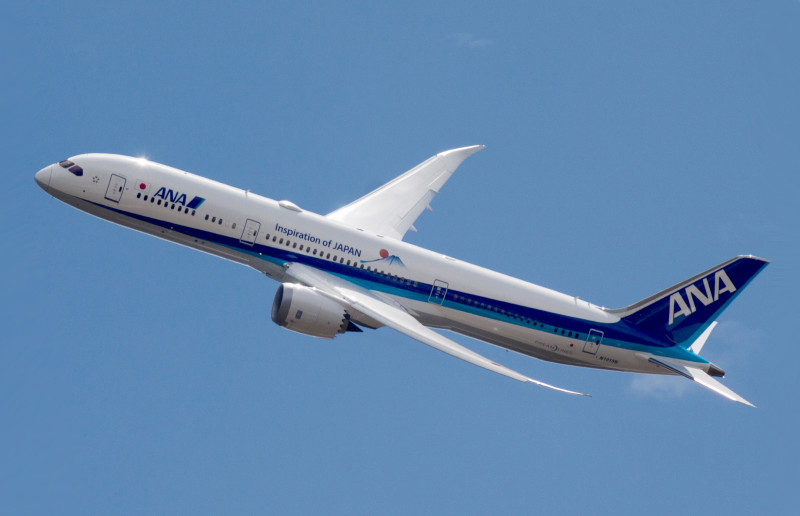Air New Zealand is the flag carrier airline of New Zealand, with its hub in Auckland. It operates scheduled passenger flights to 20 domestic and 28 international destinations across 18 countries, largely focused within the Pacific Rim. Air New Zealand has been a member of the Star Alliance since 1999, indicating its participation in a major global airline network.
1948: Head office in Airways House
From about 1948 to 1973, the Air New Zealand head office was located in Airways House on Customs Street East.
April 1965: Rebranded as Air New Zealand
On 1 April 1965, Tasman Empire Airways Limited was rebranded as Air New Zealand.
April 1965: Air New Zealand Succeeded TEAL
On April 1965, Air New Zealand succeeded Tasman Empire Airways Limited (TEAL).
1965: Transpacific services to the United States and Asia begin
In 1965, with the increased range of the Douglas DC-8s, Air New Zealand began transpacific services to the United States and Asia, adding Los Angeles and Honolulu as destinations.
1973: Head office in Airways House
From about 1948 to 1973, the Air New Zealand head office was located in Airways House on Customs Street East.
1973: Acquisition of DC-10 airliners
In 1973, Air New Zealand acquired wide-body McDonnell Douglas DC-10 airliners and introduced the new koru-inspired logo for the airline.
1978: Merger with NAC
In 1978, Air New Zealand merged with the domestic New Zealand National Airways Corporation (NAC) to become a single airline.
1978: Merger with National Airways Corporation (NAC)
In 1978, the domestic airline National Airways Corporation (NAC) and its subsidiary Safe Air were merged into Air New Zealand, expanding the carrier's operations and adding Boeing 737 and Fokker F27 aircraft to the fleet.
1979: Air New Zealand Flight 901 crash
In 1979, the crash of Air New Zealand Flight 901 impacted the airline's reputation, leading to a Royal Commission of Inquiry and the resignation of chief executive Morrie Davis.
1981: Introduction of Boeing 747 airliner
In 1981, Air New Zealand introduced its first Boeing 747 airliner.
1983: Withdrawal of DC-8 and DC-10 aircraft
By 1983, Air New Zealand had withdrawn its DC-8 and DC-10 aircraft.
1985: Introduction of Boeing 767-200ER airliners
In 1985, Air New Zealand introduced Boeing 767-200ER airliners to fill the size gap between the Boeing 737 and 747 aircraft.
1989: Privatisation of Air New Zealand
In 1989, Air New Zealand was privatised through a sale to a consortium led by Brierley Investments, amid neoliberal economic reforms.
1990: International flights assumed the NZ code
In 1990, Air New Zealand's international flights assumed the NZ code, previously used for domestic flights.
1990: Deregulation of air transport market
In 1990, the New Zealand air transport market underwent deregulation.
1995: Acquisition of Ansett Australia stake
In 1995, Air New Zealand acquired a 50% stake in Ansett Australia.
March 1999: Air New Zealand joins Star Alliance
In March 1999, Air New Zealand became a member of the Star Alliance.
2000: Ownership battle over Ansett
From 1999 through 2000, Air New Zealand was involved in an ownership battle over Ansett with News Limited regarding a potential sale to Singapore Airlines.
2000: Acquisition of Ansett Australia
In 2000, Air New Zealand acquired the entirety of Ansett Transport Industries for A$680 million, increasing its stake from 50% to 100%.
September 2001: Ansett placed into voluntary administration
In September 2001, the Air New Zealand / Ansett Group neared collapse due to financial difficulties. Air New Zealand placed Ansett Australia into voluntary administration after a failed attempt to purchase Virgin Blue, resulting in a NZ$1.425 billion operating loss. Ansett was forced to cease operations.
October 2001: Renationalisation under government rescue plan
In October 2001, Air New Zealand was re-nationalised under a New Zealand government NZ$885 million rescue plan, with the government taking an 82% stake and appointing new leadership to prevent the airline from collapsing.
2001: Government Ownership
In 2001, Air New Zealand returned to majority government ownership after financial difficulties due to a failed tie-up with Ansett Australia.
2002: Reconfiguration of domestic operations
In 2002, Air New Zealand reconfigured its domestic operations under a low-cost airline business plan, and the New Zealand government declined Qantas's proposal to purchase a one-fifth stake in the carrier.
2003: Addition of Airbus A320 to fleet
In 2003, Air New Zealand added the Airbus A320 to its fleet for use on short-haul international and later domestic flights.
2003: Return to profitability
In 2003, Air New Zealand returned to profitability, reporting a net profit of $NZ165.7 million.
2004: Relaunch of long-haul product
In 2004, Air New Zealand announced a relaunch of its long-haul product, introducing new seats in its business, premium economy, and economy class cabins.
2004: Orders placed for Boeing 787 Dreamliner
In 2004, Air New Zealand placed orders for the Boeing 787 Dreamliner and was later announced as the launch customer for the -9 variant of the 787.
2005: First Boeing 777 aircraft received
In 2005, Air New Zealand received its first Boeing 777 (-200ER variant) aircraft.
July 2006: Flights re-numbered
On 31 July 2006, flights were re-numbered to the NZ700-999 series for trans-Tasman services, and the NZ1000 series for domestic services.
October 2006: Move to "The Hub" head office
From late September to early October 2006, Air New Zealand moved 1,000 employees to "The Hub", its new head office in Auckland's Wynyard Quarter.
November 2008: Ownership of A320 fleet transferred back to Air New Zealand
On 26 November 2008, ownership of Zeal320's Airbus A320-200 fleet was transferred back to Air New Zealand.
2009: Industrial action delayed low-cost carrier plans
In 2009, continued industrial action by Zeal320 staff delayed the proposed low-cost carrier airline as a successor to Freedom Air.
December 2010: Alliance with Virgin Blue approved
On 21 December 2010, the New Zealand government approved an alliance between Air New Zealand and Virgin Blue (now Virgin Australia) to expand operations between Australia and New Zealand.
2010: Airline of the Year Award
In 2010, Air New Zealand was awarded Airline of the Year by the Air Transport World Global Airline Awards.
2011: Introduction of Boeing 777-300ER and Economy Skycouch
In 2011, Air New Zealand introduced the Boeing 777-300ER to its fleet, as well as the Economy Skycouch.
2012: Airline of the Year Award
In 2012, Air New Zealand was awarded Airline of the Year by the Air Transport World Global Airline Awards.
March 2013: Hong Kong stopover discontinued
In March 2013, Air New Zealand discontinued its Hong Kong stopover on flights to London Heathrow, opting for a codeshare agreement with Cathay Pacific instead.
November 2013: Government share reduction in Air New Zealand
In November 2013, the New Zealand Government reduced its share in Air New Zealand from 73% to 53% as part of its asset sales program, making $365 million.
July 2014: Delivery of first Boeing 787-9
On 9 July 2014, after a four-year delay, Air New Zealand took delivery of its first Boeing 787-9 aircraft.
September 2014: Retirement of final Boeing 747
In September 2014, Air New Zealand retired its final Boeing 747 aircraft.
2014: Safest Airline Ranking
In 2014, Air New Zealand was ranked the safest airline in the world by JACDEC.
September 2015: Retirement of last Boeing 737
In September 2015, Air New Zealand retired its last Boeing 737 aircraft.
2015: Zeal320 removed from New Zealand Companies Office
In 2015, Zeal320 was removed from the New Zealand Companies Office.
August 2016: Eagle Airways ceased operations
On 26 August 2016, Air New Zealand subsidiary Eagle Airways ceased operations.
October 2016: Air New Zealand sold its remaining stake in Virgin Australia
By October 2016, Air New Zealand sold its remaining stake in Virgin Australia to investors and the Nasham Group.
March 2017: Retirement of last Boeing 767
In March 2017, Air New Zealand retired its last Boeing 767 aircraft, leaving a simplified fleet.
2017: Passenger Numbers
In the 2017 financial year, Air New Zealand carried 15.95 million passengers.
April 2018: Air New Zealand ended its partnership with Virgin Australia
On 4 April 2018, Air New Zealand ended its partnership with Virgin Australia, which went into effect from 28 October 2018.
October 2018: Partnership with Virgin Australia ended
On 28 October 2018, Air New Zealand's partnership with Virgin Australia ended.
October 2019: Discontinuation of Los Angeles to London route
In October 2019, Air New Zealand announced it would discontinue its Los Angeles to London route in October 2020 and launch a new non-stop route from Auckland to New York.
2019: Apology over Mt Erebus disaster
In 2019, the New Zealand Government and Air New Zealand formally apologised over the Mt Erebus disaster.
2019: Air Nelson and Mount Cook Airline merged into parent's operations
In late 2019, Air Nelson and Mount Cook Airline were merged into Air New Zealand's operations.
March 2020: Sale of London Heathrow slots
In March 2020, Air New Zealand sold its London Heathrow slots for USD $27 million to United Airlines. The London route was prematurely cancelled in March 2020 due to the COVID-19 pandemic.
October 2020: Los Angeles to London route discontinued
In October 2020, Air New Zealand discontinued its Los Angeles to London route as announced the previous year.
2020: Flights to London Heathrow stopped
In 2020, Air New Zealand stopped its flights to London Heathrow altogether due to heavy competition and a lack of demand.
June 2022: Major cabin refurbishment announced
In June 2022, Air New Zealand announced a major refurbishment of its existing cabins, including a new product called "The Skynest."
September 2022: First flight to New York
On 17 September 2022, Air New Zealand's first flight took place from Auckland to New York after it was rescheduled due to the COVID-19 pandemic.
November 2024: Exploring return to London
In November 2024, Air New Zealand indicated it was "exploring options" for a possible return to London.
2024: New aircraft delivery
In 2024, Air New Zealand's new Boeing 787-9 and 787-10 aircraft are set to be delivered, featuring refurbished cabins.
2025: Granted slots at London Gatwick Airport
Following a rejection for slots at Heathrow, in 2025, Air New Zealand was granted daily slots at London Gatwick Airport for summer.
Mentioned in this timeline
The United States of America is a federal republic located...

The Boeing Dreamliner is an American wide-body airliner developed by...
New Zealand is an island country located in the southwestern...
Hong Kong is a Special Administrative Region of the People's...

The Boeing Company is a multinational corporation and one of...

Los Angeles is the most populous city in California and...
Trending
The School District of Philadelphia SDP established in is the largest school district in Pennsylvania and the eighth-largest in the...
11 days ago Tigers Pursue Kyle Finnegan in Free Agency: Mutual Interest and Potential Deal
12 days ago Alex Karp Defends Palantir's Ethics and His 'Arrogant Prick' Persona at Dealbook Summit.

7 months ago Lions seek edge rusher: Za'Darius Smith, veteran option alongside Aidan Hutchinson.
16 days ago Anthropic CEO to testify on Chinese AI cyberattack; Chatbots becoming criminals.

6 months ago Kash Patel, FBI Director, entangled in 2020 election conspiracy probe.
Popular

Candace Owens is an American conservative political commentator and author...

Ilhan Omar is an American politician currently serving as the...

XXXTentacion born Jahseh Dwayne Ricardo Onfroy was a controversial yet...

Frederick Christ Trump Sr - was an American real estate...

Bill Gates an American businessman and philanthropist revolutionized personal computing...

Charles James Charlie Kirk was a prominent American right-wing political...